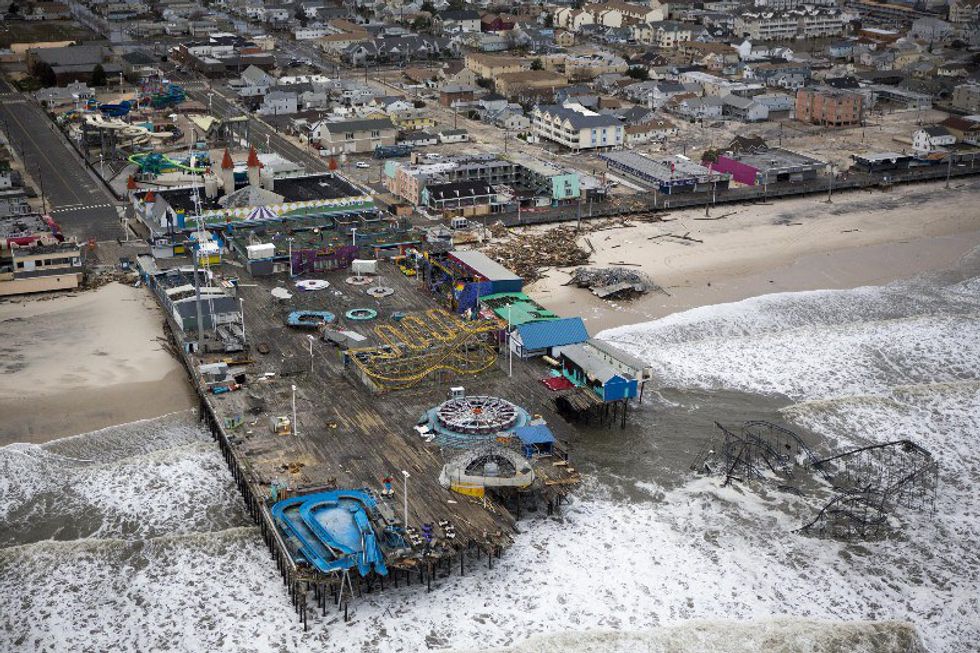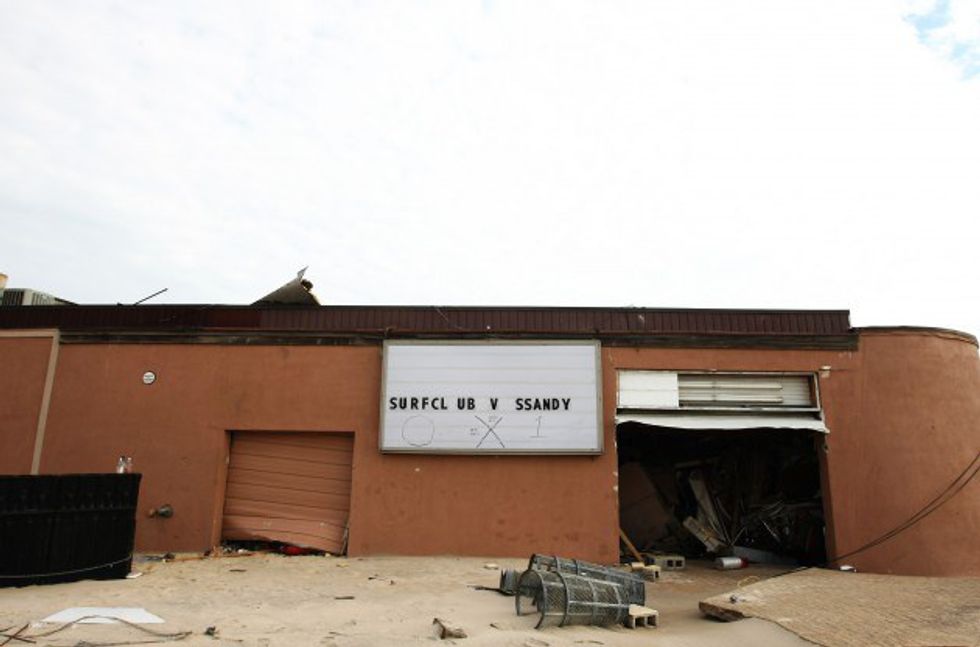Last Thursday marked the three-year anniversary of Hurricane Sandy: one of the most destructive storms in U.S. history that claimed over 200 lives and cost over $75 billion in damage. You're probably familiar with these facts, whether you watched it on the news or read about it in the paper. Myself and others, though, who have been affected by the storm, have lived through it. And we have our own story to tell. Three years has passed since the deadly superstorm hit my home on the Jersey Shore, and nothing has been the same since that day.
It was a Friday. The students of my high school were looking forward to what was supposed to be a fun-filled Halloween weekend. There was a tropical storm in the forecast, and some were predicting it to be severe. I remember one of my teachers saying “our test will be postponed in case school is cancelled on Monday.” Why would school be cancelled? Because of a little storm? I didn’t take it very seriously. Little did I know I wouldn’t be back in school for over two weeks.
Over the weekend, the supermarkets were packed with hoards of people buying non-perishable food items and other storm supplies. Events were being cancelled left and right. My parents insisted I stayed home that night. I remember thinking that everyone was overreacting. Hurricanes rarely hit New Jersey, surely this one couldn’t be too bad. But on October 29, 2012, a disaster struck that nobody in my hometown was prepared for.
It started that afternoon. High winds, pouring rain, thunder and lightening. Everyone took cover inside. Anything outdoors that was not tied down was broken or blown away. My family and I stayed indoors, watching the horrific scene take place outside our windows. The street began to flood, the trees swayed violently, thunder roared and wind shook the house. Then, the power went out. And so began the darkest, scariest night of my life. It was hard to sleep with everything going on outside. The sound of storms usually puts me to sleep, but this time I was anxious all through the night, praying that a tree would not come through my window.
By the next morning, the storm had subsided. We went outside to find that the largest tree in our yard had split in half; its large branch that I used to swing from now lay across our lawn. Branches, fence posts and lawn chairs littered the neighborhood. With the exception of a few fallen trees, our street was left unharmed. But we were much more fortunate than others.
While I was busy complaining over not being able to take a shower or watch TV, many of my classmates didn’t even have a place to live. Hundreds of families were evacuated and displaced with nowhere to go. In the mean time, my high school was transformed into a makeshift shelter. One day, I went to volunteer, and was shocked by the utter chaos. My friends and I sorted clothing into piles that nearly filled a classroom. We must have piled hundreds of soup cans in the cafeteria that day. I watched with empathy as families picked through the bins, trying to find another set of clothes. They showered in our locker rooms, slept in our classrooms, and ate in our cafeteria. I have never seen so many humans in such a desperate state.
For the few days after the storm, nobody quite knew what to do with themselves. We had no heat, no water and no electricity. Driving was nearly impossible because many roads were either flooded or blocked by fallen trees and telephone poles. Even if you could drive, no businesses were open. Not even WaWa! It was like living in a post apocalyptic world. The place I had grown up in was suddenly unfamiliar to me.
My neighbors, who were running on a generator, let me come over to charge my phone and laptop. That was the first time I saw television footage of the storm. I could not believe my eyes. Our beaches were decimated. The boardwalk had crumbled and fallen into the sea. Beautiful oceanfront homes underwater, and citizens floating down the street in canoes. The first rollercoaster that I ever rode was now standing on the ocean floor, looming over the beach like a skeleton, as my childhood memories were washed away.
The hurricane was not the only storm that Mother Nature decided to throw at our town. Less than a week after Sandy hit, a blizzard swept the area, covering the already destroyed land with an icy blanket. Many were still without heat or electricity. Just when my power had come back on, the snow storm put it out again. Those were the darkest, loneliest days. The sun set at around five in the evening, and after that, we were living by candle light. Despite the dreary conditions, my family came together more than ever before. No one wanted to be alone in their dark, cold, bedrooms, so we gathered around the fire. Without TV, and with limited battery life, we found other ways to entertain ourselves. I read the Legend of Sleepy Hollow and Harry Potter aloud by the fire, and played on my Nintendo DS that I hadn’t touched in years. Since Halloween had been cancelled in my town, my friend and I bought candy and watched scary movies to have our own celebration.
Gradually, stores and restaurants began to reopen, the roads were cleared, and people were moved from the shelters into temporary housing. After two dark and lonely weeks, we finally went back to school. We carried on.
I’ll never forget our first football game after the storm. We were facing our rival school, in the famous North vs. South Civil War game. It was the most crowded game I had ever cheered at. Vendors were selling “Restore the Shore” tee shirts, which raised tons of money for hurricane relief. Fans filled the stands and both teams had enormous spirit. I don’t even remember who won the game, but nobody even cared about the score. We were all just happy to be there, to regain some sense of normalcy. For the duration of a football game, we were able to put aside our grief and root for something we believed in: ourselves. Seeing the entire community come together to support each other in a time of despair gave my spirit a lift that it so desperately needed.
Three years, and millions of dollars of damage later, my community is still recovering. Families have moved back into their houses, the beaches have reopened, but the wound left by Sandy is still fresh. Our new boardwalk is in pristine condition, though the boardwalk that I grew up with is now nothing but a memory. Homes still lay in ruins, left untouched by their owners. I walk past the demolished surf club where I spent my beach days as if it were a burial ground. The abandoned buildings haunt me like the ghosts of summers’ past.
Maybe things will never be the same. But now they have the chance to be better. My town has been through it all, and came out of it with that unbreakable Jersey attitude. The resilience of my community is stronger than any storm. In the worst natural disaster to ever hit our area, I’ve seen the best of the people who live here. I’ve witnessed the generosity so many, and gained a newfound sense of compassion toward others in return. I used to dread the tourists coming each summer, but now I feel grateful for the people who still vacation here. I used to complain that our beaches were too crowded or that badges were too expensive. But when I wake up at 4 a.m. just to see the sunrise over the water, I know that there is a reason I always return to this place. And that there is no place I'd rather call home.




















